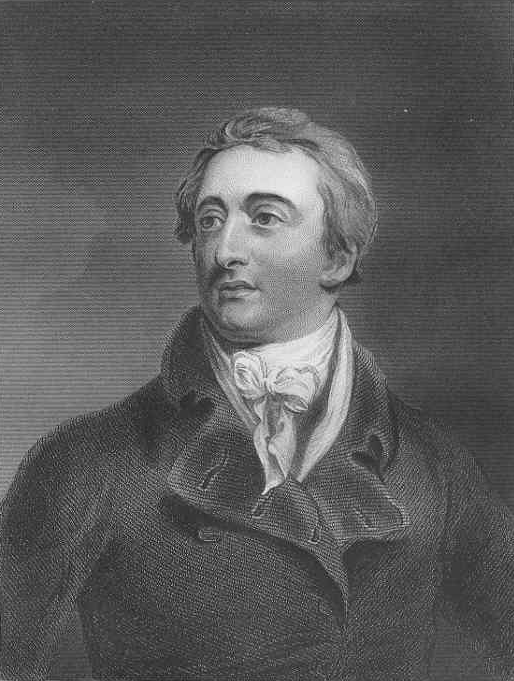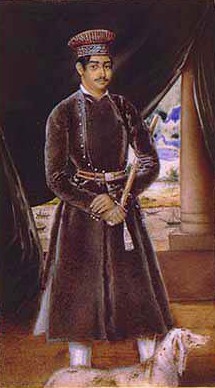|
Lambardar
Numbardar or Lambardar (, , , ) was the village headman responsible for tax collection in the village during the British Raj. They were appointed under the Mahalwari system. Etymology The compound word ''numberdar'' is composed of the English word ''number'' (such as a certain number or percentage of the land revenue) and ''dar'' (در from the Persian loan word into Bengali, Hindi, Urdu and Punjabi languages, meaning the bearer, possessor, holder, keeper or owner), thus in this context it means ''the one who holds a certain percentage of the land revenue''. The alternate term ''lambardar'' is a matter of dialect. In the Malwa region of Punjab and the states of Haryana, Himachal, Delhi, Uttra Khand, Uttar Pradesh, etc., the official term in the land revenue acts is ''numberdar''. In Majha dialect of Punjabi language, the sound ''L'' become ''N'', such as ''langhna'' (pass) and ''nambardar'' (percentage revenue holder) become ''naghna'' and ''lambardar'' respectively. [...More Info...] [...Related Items...] OR: [Wikipedia] [Google] [Baidu] |
Indian Honorifics
Indian honorifics are honorific titles or appendices to names used in the Indian subcontinent, covering formal and informal social, commercial, and religious relationships. These may take the form of prefixes, suffixes or replacements. Native honorifics Honorifics with native/indigenous Hindu-Buddhist origin. Hindu-Sikh honorifics List of titles * Abhyasi * Acharya * Aasaan * Chimaji Appa, Appa - title given to Lingayat and Maratha Kings meaning "head" or "father". * Ayya (Pali word), Ayya * Baba (honorific), Baba * Babu (title), Babu * Bhagavan * Bhagat * wikt:bhai, Bhai * Chhatrapati * Chakravarti (Sanskrit term), Chakravarti, Chakraborty * Chettiar, suffix denoting a man's wealth * Chitnis one of the most important and highest-ranking ministers in a court. * Choudhury * Chempakaraman * Das (surname), Das, a common surname on the Indian subcontinent which has also been applied as a title, signifying "devotee" or "votary" (in the context of religion); also, Dasa * Devi * Des ... [...More Info...] [...Related Items...] OR: [Wikipedia] [Google] [Baidu] |
Patwari
A village accountant or karanam (Andhra Pradesh), patwari (Madhya Pradesh, Punjab, Telangana, West Bengal), patowary (Assam), talati (Gujarat, Karnataka, Maharashtra), lekhpal (Uttar Pradesh, Uttarakhand) is a government role in rural areas of the Indian subcontinent. Introduced during the early 16th century, it was maintained by the British Raj. The official, as a representative of the state, is responsible for keeping land records, agricultural records and collecting taxes and acting as the revenue police in certain areas where they were given special jurisdiction. History Mughal emperor Akbar improved the ''patwari'' system, which had been introduced in the Indian subcontinent under the leadership of Sher Shah Suri. The East India Company and subsequently British crown continued with the system with some administrative changes. It denotes the office of the ''talati'' in rural Gujarat, Maharashtra and Karnataka. The office and its holder are known as Talatis, and holders of the ... [...More Info...] [...Related Items...] OR: [Wikipedia] [Google] [Baidu] |
Mahalwari
The Mahalwari system was used in India to protect village-level-autonomy. It was introduced by Holt Mackenzie in 1822. The word "Mahalwari" is derived from the Hindi word ''Mahal'', which means a community made from one or more villages.. Mahalwari consisted of landlords or Lambardars (also called as Nambardars) assigned to represent villages or groups of villages. Along with the village communities, the landlords were jointly responsible for the payment of revenue . Revenue was determined on basis of the produce of Mahal. Individual responsibility was not assigned. The land included under this system consisted of all land in the villages, including forestland, pastures etc. This system was prevalent in parts of the Gangetic Valley, Uttar Pradesh, the North Western province, parts of Central India and Punjab. The other two systems were the Permanent Settlement in Bengal in 1793 and the Ryotwari system in 1820. It covered the states of Punjab, Awadh and Agra, parts of Orissa, and M ... [...More Info...] [...Related Items...] OR: [Wikipedia] [Google] [Baidu] |
British Raj
The British Raj ( ; from Hindustani language, Hindustani , 'reign', 'rule' or 'government') was the colonial rule of the British The Crown, Crown on the Indian subcontinent, * * lasting from 1858 to 1947. * * It is also called Crown rule in India, * * * * or direct rule in India. * Quote: "Mill, who was himself employed by the British East India company from the age of seventeen until the British government assumed direct rule over India in 1858." * * The region under British control was commonly called India in contemporaneous usage and included areas directly administered by the United Kingdom of Great Britain and Ireland, United Kingdom, which were collectively called ''Presidencies and provinces of British India, British India'', and areas ruled by indigenous rulers, but under British British paramountcy, paramountcy, called the princely states. The region was sometimes called the Indian Empire, though not officially. As ''India'', it was a founding member of th ... [...More Info...] [...Related Items...] OR: [Wikipedia] [Google] [Baidu] |
Outlook (Indian Magazine)
''Outlook'' is a weekly general interest English and Hindi news magazine published in India. History and profile ''Outlook'' was first issued in October 1995 with Vinod Mehta as the editor in chief. It is owned by the Rajan Raheja Group. The publisher is Outlook Publishing (India) Pvt. Ltd. It features contents from politics, sports, cinema, and stories of broad interests. By December 2018, ''Outlook'' magazine's Facebook following had grown to over 12 lakh A lakh (; abbreviated L; sometimes written lac) is a unit in the Indian numbering system equal to one hundred thousand (100,000; scientific notation: 105). In the Indian 2, 2, 3 convention of digit grouping, it is written as 1,00,000. F ... (1.2 million). Staff Editor Ujjwal Karmakar Editors-in-chief * Vinod Mehta (1995–2012) * Krishna Prasad (2012–2016) *Rajesh Ramachandran (2016–2018) Managing editors * Tarun Tejpal (1995 - March 2000) [...More Info...] [...Related Items...] OR: [Wikipedia] [Google] [Baidu] |
Titles In India
A title is one or more words used before or after a person's name, in certain contexts. It may signify their generation, official position, military rank, professional or academic qualification, or nobility. In some languages, titles may be inserted between the first and last name (for example, in German or clerical titles such as Cardinal in Catholic usage – Richard Cardinal Cushing). Some titles are hereditary. Types Titles include: * Honorific titles or styles of address, a phrase used to convey respect to the recipient of a communication, or to recognize an attribute such as: ** Imperial, royal and noble rank ** Academic degree ** Social title, prevalent among certain sections of society due to historic or other reasons. ** Other accomplishment, as with a title of honor * Title of authority, an identifier that specifies the office or position held by an official Titles in English-speaking areas Common titles * Mr. – All males * Ms. – Adult women * Mrs. ... [...More Info...] [...Related Items...] OR: [Wikipedia] [Google] [Baidu] |
Sarpanch
A sarpanch, gram pradhan, mukhiya, or president is a decision-maker, elected by the village-level constitutional body of local self-government called the gram sabha (village government) in India. The sarpanch, together with other elected panchayat members (referred to as ''ward panch'' or ''ward member''), constitute gram panchayats and zilla panchayat The Zila Panchayat or District Development Council or Zilla Parishad or District Panchayat or is the third tier of the Panchayati Raj system and functions at the district levels in all states. A Zila Parishad is an elected body representing the ...s. The sarpanch is the focal point of contact between government officers and the village community and retains power for five years. The term used to refer to the sarpanch can vary across different states of India. There are many commonly used terms for sarpanch in various states: ''panchayat president'', ''gram pramukh, gram pradhan, gram adhyaksha, gaon panchayat president, gram p ... [...More Info...] [...Related Items...] OR: [Wikipedia] [Google] [Baidu] |
Feudalism In Pakistan
Feudalism in contemporary Pakistan usually refers to the power and influence of large landowning families, particularly those with very large estates in more remote areas. The adjective "feudal" in the context of Pakistan has been used to mean "a relatively small group of politically active and powerful landowners." "Feudal attitude" refers to "a combination of arrogance and entitlement." According to the Pakistan Institute of Labor Education and Research (PILER), 5% of agricultural households in Pakistan own nearly two-thirds of Pakistan's farmland. Large joint families in Pakistan may possess hundreds or even thousands of acres of land, while making little or no direct contribution to agricultural production, which is handled by "peasants or tenants who live at subsistence level." Landlord power may be based on control over local people through debt bondage passed down generation after generation, and power over the distribution of water, fertilisers, tractor permits and agricul ... [...More Info...] [...Related Items...] OR: [Wikipedia] [Google] [Baidu] |
Indian Feudalism
Indian feudalism refers to the Examples of feudalism, feudal society that made up History of India, India's social structure Independence of India, until the formation of the Republic of India in the 20th century. Terminology Use of the term feudalism to describe India applies a concept of medieval European origin, according to which the landed nobility held lands from the Crown in exchange for military service, and vassals were in turn tenants of the nobles, while the peasants (villeins or serfs) were obliged to live on their lord's land and give him homage, labor, and a share of the produce, notionally in exchange for military protection. The term Indian feudalism is used to describe taluqdars, zamindars, and jagirdars. Most of these systems were abolished after the Indian independence movement, independence of India and the rest of the subcontinent. Damodar Dharmananda Kosambi, D. D. Kosambi and Ram Sharan Sharma, R. S. Sharma, together with Daniel Thorner, brought peasants ... [...More Info...] [...Related Items...] OR: [Wikipedia] [Google] [Baidu] |
Sahiwal
Sahiwal ( Punjabi / ; ; ), formerly known as Montgomery, is a city in central Punjab, Pakistan. It is the administrative capital of both Sahiwal District and Sahiwal Division. It is the 19th largest city of Pakistan by population according to the 2023 census of the country. Sahiwal is located approximately 180 km from the major city Lahore and 100 km from Faisalabad and lies between Lahore and Multan. Sahiwal is approximately 152 meters above the sea level. The city of Harappa is located just 24 kilometers (15 miles) west of Sahiwal. The city lies in a densely populated region between the Sutlej and Ravi rivers. The principal crops are wheat, cotton, tobacco, legumes, potato and oil seeds. Cotton goods and lacquered woodwork are manufactured. History Following the Umayyad Arab conquest of the Punjab cities of Uch and Multan, led by Muhammad bin Qasim, Arabs of the Emirate of Multan ruled the region of Sahiwal for a few centuries. Then Sahiwal remained par ... [...More Info...] [...Related Items...] OR: [Wikipedia] [Google] [Baidu] |
Chichawatni
Chichawatni (, ) is a city in the Sahiwal District of the Punjab province of Pakistan. It is the administrative center of Chichawatni Tehsil. Situated near the old main road called Grand Trunk Road, it lies approximately from the district capital, Sahiwal. According to the 2017 census, Chichawatni's population was 94,733. History From the beginning of the 7th century, Rajput Bhatti kingdoms dominated eastern portions of Pakistan and northern India. In 997 CE, Sultan Mahmud Ghaznavi, took over the Ghaznavid dynasty empire established by his father, Sultan Sebuktegin. In 1005, he conquered the Shahis in Kabul and followed it by the conquests of some western Punjab region. Eastern Regions of Punjab from Multan to Rawalpindi in north (Including region of present-day Faisalabad, previously called Lyallpur) remained under Rajput rule until 1193. The Delhi Sultanate and Mughal Empire later ruled the region. The Punjab region became predominantly Muslim due to the missionar ... [...More Info...] [...Related Items...] OR: [Wikipedia] [Google] [Baidu] |




